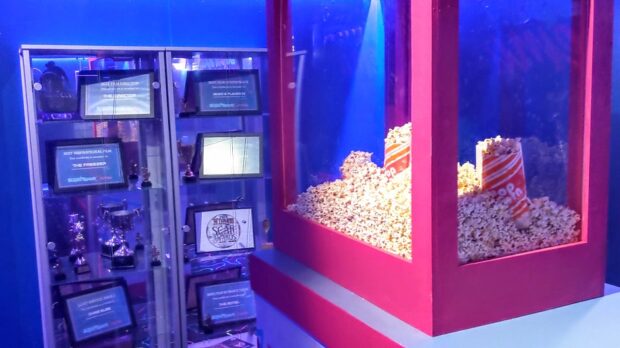‘The Smell of Immersion’ documents theme park smells for future generations
“The Smell of Immersion” project asserts theme park smells are the forgotten aspect of a day spent at parks around the world, but Liam Findlay is about to change that.

Photos courtesy of Liam Findlay
Concept drawings, artist renderings, photos, and the music heard in the parks have all been well documented, but attraction designer Findlay is on a mission to add the missing element: theme park smells.
“What if we knew exactly what people smelt during the opening day of Disneyland in 1955?” he wonders. “The hot, newly-laid ground, indicating just how recently construction had ended. Perfumes suggesting how wealthy — or not — the average guest was. Cigarette clouds reflecting health awareness at the time. Was the train stinkier and less environmentally friendly? Was waste disposal efficient? Maybe there were flavors people had longed for during the recent war — increasing satisfaction differently to how they would today. Comparing the smells of the past with the smells of today can unlock so many brilliant insights!”

Findlay is a historian of attraction scents, and is now on a mission to create a series of maps he has dubbed “aroma time capsules.” His focus is on visiting a variety of theme parks, with the goal of pinpointing the locations of interesting or iconic smells, which he complies into maps for a project he calls “The Smell of Immersion.”
Thorpe Park in Chertsey, England, is the subject of his first “smell map.” Subsequent maps will document odors in parks across Europe, and eventually, U.S. parks such as Disneyland and Universal Studios parks.

“My hope in making these smell maps is that in 10 or 20 years we can look back and consider how things have evolved in culture and in theme park design,” he says. “Will there be a lack of sweet smells in parks because of changing health attitudes? Will food aromas be more multicultural? Will the rubber whiff of over-the-shoulder coaster restraints become extinct due to industry developments? Changing plant scents might even reflect changes in global warming.”
Findlay wants to encourage park-goers to be aware of the scents around them, including, he says, the iconic smell of the water in Disney’s Pirates of the Caribbean attraction. He believes these significant odors impact emotions, behavior, and ultimately, memories of time spent in the parks.

Expertise that will serve him well with the project comes from Findlay’s time as a consultant for AromaPrime, a theme park scent company, and part of his inspiration came from the academic project, Odeuropa.
“Odeuropa is an amazing project made up of specialists in smell history,” he insists, “and it explores the role of smell in museums. This covers both preserving smells from the past — like we do with paintings and sculptures — as well as using smells to engage visitors. Through Odeuropa, I met Dr. Kate McLean, and it is her own smell maps of public spaces that inspired my project.”
Findlay invites people to reach out to him on social media (@Pevalwen) with their own memories of scents in the parks, which will aid him in his book research and in his “The Smell of Immersion” project. You can learn more here.

